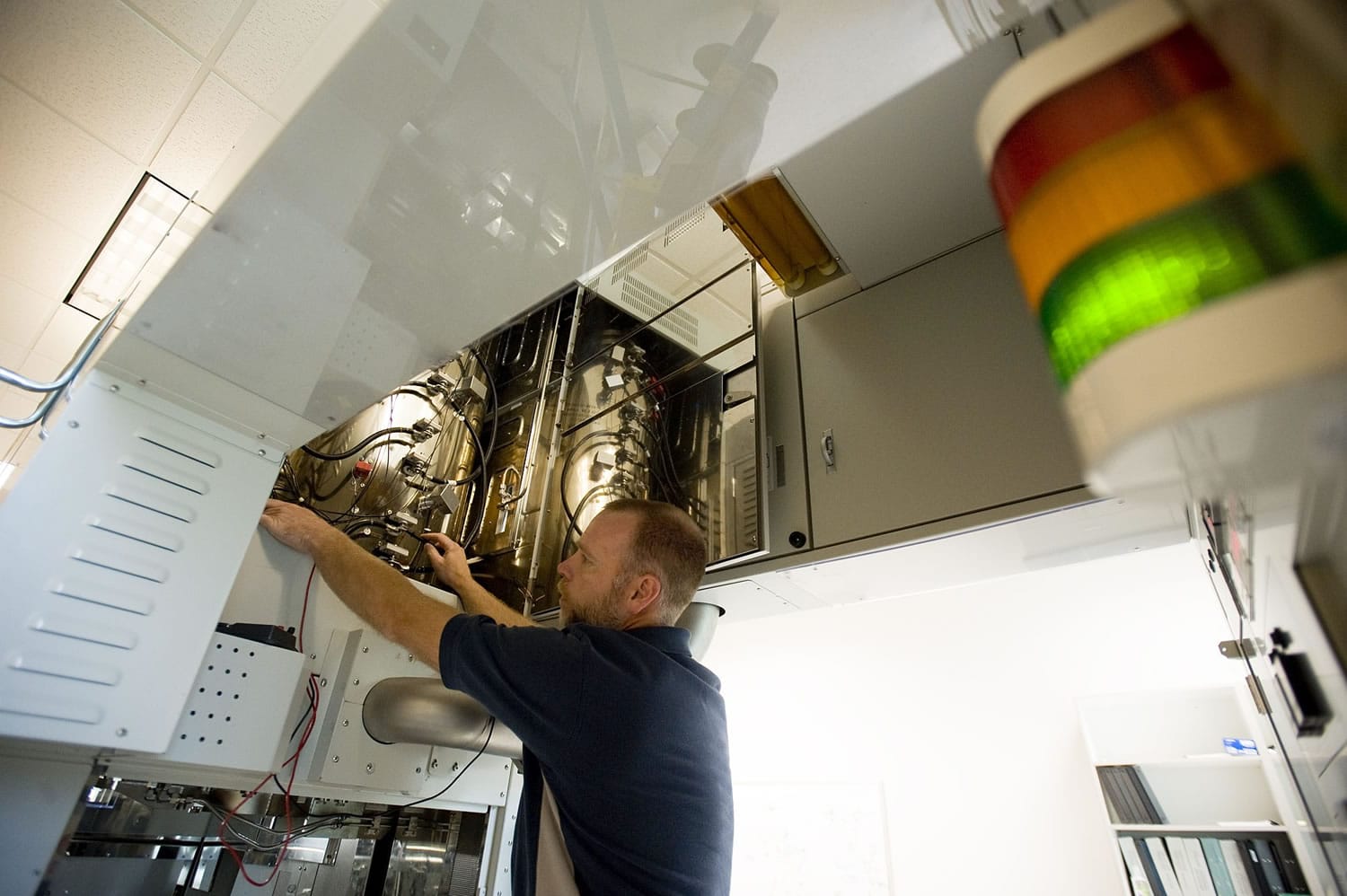• Chip sales will climb, but only in the single digits.
• Conversion to larger 450 millimeter wafers will gain traction.
• Energy legislation may affect the region’s competitiveness.
The U.S. semiconductor industry has been America’s No. 1 export sector over the past five years and a bellwether of the country’s economy. Semiconductor innovations form the foundation for America’s $1.1 trillion technology industry, affecting a U.S. workforce of nearly 6 million.
Here in Southwest Washington we are fortunate to have a cluster of semiconductor companies, including manufacturers such as WaferTech, SEH America, Linear Technologies and nLight.
With 82 percent of U.S. semiconductor sales going to buyers outside the United States, it is important to review how this industry did in 2011 on a global basis, look at a near-term forecast for 2012 and examine where the industry is heading and what is needed to keep this Clark County high-tech cluster of companies globally competitive.
Looking at 2011
Most pre-Japan earthquake semiconductor forecasts were calling for single-digit growth of worldwide semiconductor sales in 2011, about 3 percent to 7 percent. Japan accounted for approximately 20 percent of the world’s semiconductor production in 2010 and is home to a large number of semiconductor companies.
The devastating March 11 earthquake and resulting tsunami significantly affected the world’s industrial production and unexpectedly highlighted Japan’s prominent role in the global supply chain.
Despite the concern about supply crisis of key components, Japan’s semiconductor industry proved that it could overcome disaster and recover quickly with the help of crisis planning, global supply-chain management, and effective customer communications. Clark County high-tech companies implemented business continuity plans that quickly mitigated any local short-term effects related to this disaster.
With final numbers still coming, it appears that worldwide 2011 semiconductor sales will be about $314 billion, nearly in line with pre-earthquake forecasts. Strong demand for automotive applications and mobile processing in handheld devices such as smartphones, tablets and e-readers accounted for a good portion of this increase.
The future
With the U.S. still nursing a recession hangover and pending financial crises affecting many European countries, the outlook of the global economic condition appears weak. This started to impact the demand for chips in the fourth quarter of 2011. This has led to speculation that all major electronic segments will see much slower growth in 2012, except for the communications segment, primarily due to the strength in the demand for smartphones. So not surprisingly, forecasters are predicting only slightly positive, or in some cases negative, growth rates for 2012 semiconductor sales, varying from 3 percent growth to 1 percent contraction.
Semiconductor manufacturing equipment is the business segment which my company, Kokusai, participates in. Shipments have leveled off after a strong two-year rebound from the 2008-2009 downturn. Semiconductor equipment suppliers generally held a conservative business outlook during the fourth quarter of 2011, citing seasonal effects as well as macroeconomic uncertainties that have discouraged semiconductor manufacturers from expanding manufacturing. This will lead to a 3 percent decline in equipment sales in 2012. However, investment in new technologies and manufacturing innovations continue, which segues nicely to the next big thing.
The next big thing
The semiconductor industry, including companies in Clark County, lives — and dies — by a simple creed: smaller, faster and cheaper.
One of the ways that the industry can lower costs is to manufacture chips on larger silicon wafers.
Larger wafers mean that there will be a greater number of chips produced per cycle, which means a reduced production cost and lower prices for consumers. The current industry standard is 300 millimeter wafers, which are about 12 inches in diameter. The next size up is 450 millimeters, or 18 inches, which can fit approximately 1.8 times more chips than their 300 millimeter counterparts.
The chip industry has been talking about the move to 450 millimeter production wafers for several years now, and it seems like this transition is finally set to happen. Last September, industry giants Intel, Samsung, TSMC (parent of Camas-based WaferTech), IBM and Global Foundries announced a Global 450 Consortium, called G450C, to speed along research and development in this area.
New York state is helping to subsidize investment by these manufacturers in a 450 millimeter production line that will be established by the G450C group in Albany, N.Y., by mid-2013 to early 2014. The end result of what will ultimately become a $30 billion to $40 billion investment in 450 millimeter wafer manufacturing will be cheaper and more innovative electronics for the consumer.
The long term
Cheap and predicable energy has always been our region’s trump card in attracting and retaining companies that manufacture.
Beginning in 2012, voter-approved Initiative 937, the Energy Independence Act, takes effect. It requires local electric utilities to obtain 15 percent of their power supply from renewable sources by 2020, starting with 3 percent in 2012. Although hydropower is abundant in this region, it is not a considered a renewable resource according to I-937. The rules will push up the cost of electricity in the state.
The Clark County High Technology and Community Council, which includes many high-tech companies in Clark County, has proposed changes to I-937, aimed at keeping Southwest Washington globally competitive without undermining the original intent of the initiative.
Manufacturing competitiveness and technology leadership are two essential ingredients for long-term survival in the semiconductor industry. The semiconductor companies in Southwest Washington has demonstrated the industry not only provides well-paying jobs, it also serves as a catalyst that has transformed this region into a high-technology industry cluster that generates additional high-tech jobs, investment and economic diversity — ideally for the long term.



